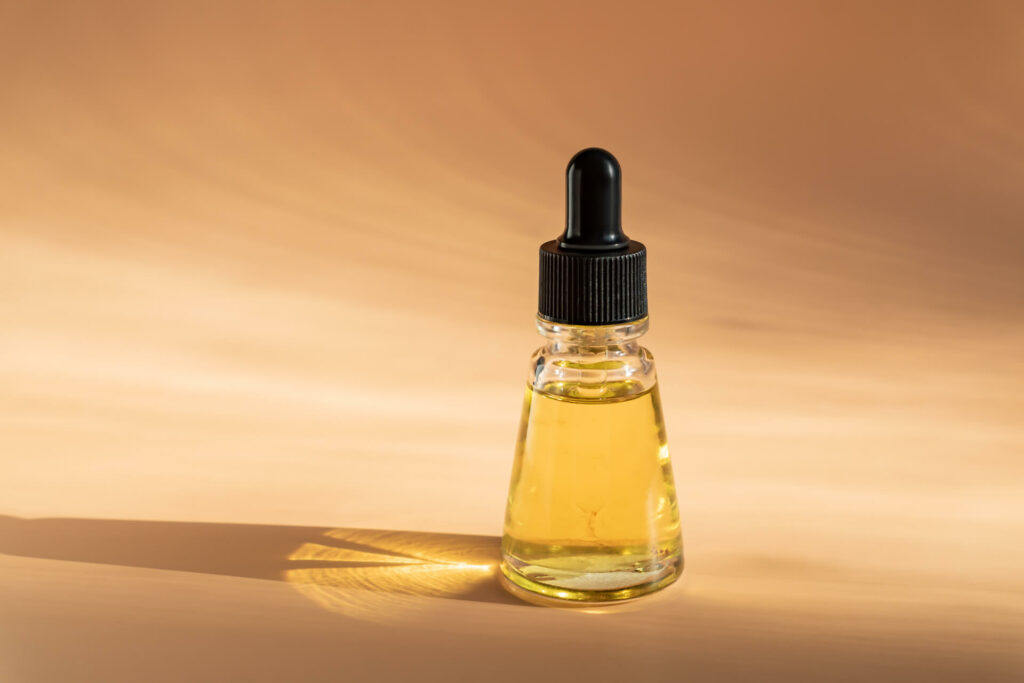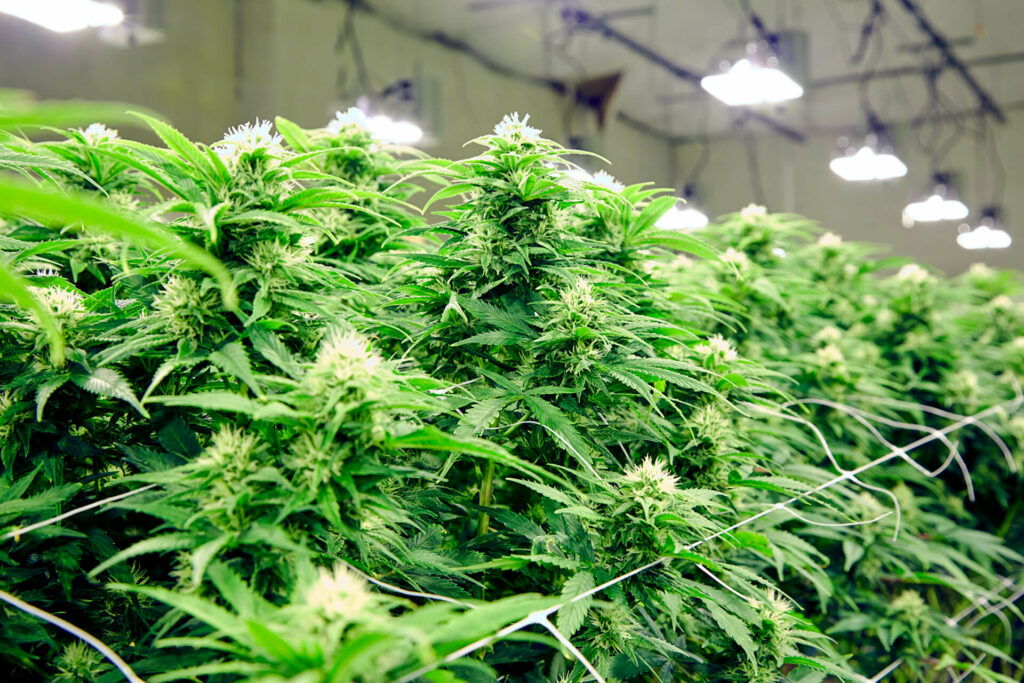Mastering Efficiency in Spice Extraction
In the realm of culinary artistry, the extraction of spices is a nuanced process that wields immense influence over the flavors and aromas that grace our palates. The quest for enhancing the efficiency of spice extraction methods is a journey marked by scientific precision. In the following discourse, we delve into a curated collection of insights, unveiling the secrets to optimizing extraction techniques.
From the meticulous selection of solvents to the harmonious balance between temperature and time, each facet explored here unveils a layer of mastery that can elevate your craft as a connoisseur of flavors. Embark upon this odyssey, where the fusion of science and culinary art ignites a symphony of scents and flavors.
Here are some points to be considered in boosting the efficiency of spice extraction:

- Particle Size Consistency: Achieving uniform particle size is crucial because it affects the surface area exposed to the solvent. Smaller particles offer a larger contact area, allowing the solvent to interact with more spice compounds. This can lead to faster and more efficient extraction. Uneven particle sizes might result in incomplete extraction, impacting the overall flavor and aroma of the final product.
- Temperature Control: Temperature plays a significant role in CO2 extraction for essential oils efficiency. Elevated temperatures can accelerate the rate of diffusion, improving the extraction process. However, excessive heat can also lead to thermal degradation of sensitive compounds, resulting in flavor loss and changes in the aromatic profile. Optimal temperature control ensures that you strike a balance between spice extraction speed and preserving the spice’s essential characteristics.
- Solvent Selection: The choice of solvent depends on the types of compounds present in the spice. Water, ethanol, and acetone are common solvents with varying degrees of polarity. Water is excellent for extracting water-soluble compounds, while ethanol and acetone are effective for oil-soluble compounds. Understanding the spice’s chemical composition helps select the most appropriate solvent for optimal extraction efficiency.
- Ultrasound-Assisted Extraction (UAE): Ultrasound waves create tiny bubbles in the solvent through captivation. As these bubbles collapse, they generate localized shockwaves that break cell walls and enhance mass transfer. This technique drastically reduces extraction time and solvent usage while maintaining the quality of extracted compounds. The mechanical effects of ultrasound help release compounds that might otherwise remain trapped in the cellular matrix.
- Enzyme-Assisted Extraction: Enzymes are biological catalysts that can break down complex structures within a spice, facilitating the release of compounds. Enzyme-assisted extraction is gentle and preserves delicate flavors, making it suitable for spices with heat-sensitive compounds. The enzymes need to be chosen carefully based on their specificity for the target compounds. The enzymatic approach can unlock a broader spectrum of compounds that contribute to the spices’ unique profile.
- pH Adjustment: Modifying the pH of the extraction solvent can influence the solubility of different compounds. Some compounds are more soluble in acidic conditions, while others are better extracted in alkaline environments. Optimizing pH conditions can help target specific compounds for extraction. However, pH adjustments need to be within a range that doesn’t cause degradation of the spice or its compounds.
- Supercritical Fluid Extraction (SCFE): Supercritical CO2, a solvent in its supercritical state, combines the advantages of both liquids and gases. It can effectively penetrate the spice matrix, dissolving and capturing all various compounds. This method leaves behind no solvent residue, ensuring the extracted flavors are pure and unaltered. Supercritical fluid extraction process is particularly useful for extracting delicate compounds that might be compromised by heat or other solvents.
- Microwave-Assisted Extraction (MAE):Microwave energy heats the spice quickly and uniformly, leading to accelerated essential oil extraction from spices. This method is efficient for extracting heat-sensitive compounds that might degrade at higher temperatures. However, close monitoring is essential to prevent overexposure to microwave energy, which could lead to unwanted alterations in flavor and aroma.
- Multiple Extractions: Multiple extractions involve using fresh solvent on the same batch of spice material more than once. This technique can capture a broader spectrum of compounds present in the spice. After the initial extraction, the solvent is removed, and a fresh batch is introduced. This process can be repeated several times to extract as many valuable compounds as possible.
It is important to note that each successive CO2 extraction for essential oils may yield compounds of diminishing concentration, so the combined extracts may need to be concentrated or fractionated for the desired flavor profile.
- Quality of Raw Material: The quality of the starting spice material significantly impacts application of supercritical fluid extraction efficiency and the final product’s flavor. Fresh, high-quality spices contain a wealth of volatile compounds that contribute to their aroma and taste. Dried or aged spices may lose some of their compounds over time. Ensuring that your spices are fresh and sourced from reputable suppliers is vital for achieving the best extraction results.
- Fractionation Techniques: Fractionation is the process of separating the extracted compounds based on their properties. This can be particularly useful when a spice contains a wide range of compounds with different solubilities and volatility. Techniques such as liquid-liquid extraction, chromatography, or distillation can be employed to isolate specific fractions. Fractionation allows for the extraction of unique flavor profiles from a single spice, and is especially valuable when aiming for precise flavor control in product formulation.
Exploring Spice Extraction Methods: Enhancing Flavor and Aroma
Spice extraction is the process of capturing the flavor and aroma of a spice. Key methods include:
- Distillation: Steam is passed through spices to release essential oils, resulting in concentrated flavor.
- Solvent Extraction: Spices are soaked in solvents such as ethanol to extract the required compounds. This method is versatile but requires careful solvent removal.
- Supercritical Fluid Extraction: Using carbon dioxide in its supercritical state, this technique efficiently extracts delicate flavors without residue.
- Pressing: Oils are extracted by applying pressure.
- Microwave-Assisted Extraction: A rapid method using microwaves for spice oil extraction.
The choice of method depends on the spice, desired product, and desired flavor profile. Factors such as temperature, pressure, and solvent type also influence the outcome.
Traditional vs. Modern Spice Extraction Techniques
Traditional and modern spice extraction methods differ significantly in terms of efficiency, purity, and environmental impact.
Traditional Methods
- Reliance on manual labor: Time-consuming and labor-intensive processes.
- Lower extraction yields: Often resulting in less concentrated extracts.
- Potential for contamination: Due to manual handling and exposure to the elements.
- Environmental impact: Can be high due to the use of large amounts of water and energy.
Examples: Grinding, crushing, steam distillation, solvent extraction.
Modern Methods
- Automation and technology: Increased efficiency and reduced labor costs.
- Higher extraction yields: Concentrated extracts with greater potency.
- Improved purity: Minimized contamination through controlled processes.
- Environmental considerations: Often more environmentally friendly with reduced waste and energy consumption.
- Examples: Supercritical fluid extraction, microwave-assisted extraction, membrane separation.
Modern spice oil extraction techniques offer advantages in terms of efficiency, purity, and environmental impact compared to traditional methods. However, traditional methods still have their place in certain applications, especially for niche markets or when preserving traditional flavors is a priority.
Common Spice Extraction Methods
Spice extraction has evolved in leaps and bounds from ancient techniques to advanced technologies.
Traditional Methods:
- Grinding and Crushing: Simple but effective for releasing flavors.
- Steam Distillation: An age-old method involving the use of steam to extract essential oils.
- Solvent Extraction: Using solvents such as alcohol to extract compounds.
These methods, while relatively simple, often require more time and labor.
Modern Techniques:
- Supercritical Fluid Extraction (SCFE): Uses supercritical carbon dioxide for targeted extraction of spices and other products without residue.
- Microwave-Assisted Extraction: Rapid process for extracting products.
- Membrane Separation: Separates components based on size, thereby enhancing purity.
Modern techniques offer precision, speed, and often preserve flavor integrity better. The choice between traditional and modern methods depends on factors such as the desired product, cost, and the specific spice features.
Steam Distillation
Steam distillation uses steam for spice oil extraction. It involves passing steam through the plant material, causing the volatile oils to vaporize. These vapors are then condensed and collected.
How it works:
- Preparation: Raw material is typically dried and ground to increase the surface area for efficient steam penetration.
- Steam Generation: Steam is produced in a separate boiler and introduced into the distillation vessel containing the raw material.
- Vaporization: Heat from the steam vaporizes the essential oils present inside the raw spice material.
- Condensation: Mixture of steam and essential oils is passed through a condenser, where it cools and condenses into a liquid.
- Separation: The condensed liquid, known as hydrosol, is a mixture of water and essential oil. The essential oil, being less dense, forms a separate layer on top of the water and can be carefully separated.
Advantages of Steam Distillation:
- Simple process: Relatively straightforward equipment and operation.
- Versatile: Suitable for a wide range of spices.
- High-quality oils: Produces essential oils with good purity and aroma.
While there are more modern spice extraction methods available, steam distillation remains a popular choice for many spice oils due to its simplicity and effectiveness.
Solvent Extraction
Solvent extraction employs solvents for the extraction of spices. The solvent dissolves the desired compounds. Ethanol is a common choice due to its food-grade nature and efficacy.
Process:
- Grounding: Ground spice is soaked in ethanol for a specific period. Ethanol dissolves the essential oils and other soluble products from the raw spice material.
- Filtration: Mixture is filtered to separate the solid plant material from the solvent-oil solution.
- Solvent Recovery: Ethanol is removed from the solution, typically through evaporation or distillation, leaving behind the concentrated spice oil.
Advantages of Ethanol Extraction:
- Preserves delicate compounds: Ethanol is gentler than high temperatures used in steam distillation, preserving the fragile aroma molecules.
- High extraction yield: Often extracts a broader range of compounds compared to steam distillation.
- Versatile: Can be used for a variety of spices.
While ethanol extraction offers advantages in spice oil extraction, it's important to balance the benefits with potential drawbacks and regulatory requirements for food safety.
CO2 Extraction
Supercritical CO2 extraction is a technique that has revolutionized the spice oil extraction. It involves using carbon dioxide under specific conditions of temperature and pressure to extract essential oils from spices.
Process:
- Supercritical state: Carbon dioxide is made supercritical (taken above its critical temperature and pressure) where it exists in a state that has features of both, liquid and gas.
- Extraction: Supercritical CO2 is passed through the spice material, dissolving the desired compounds, including essential oils.
- Separation: Extracted compounds are separated from CO2 by reducing pressure. The CO2 is recycled, and the concentrated spice oil is obtained.
Advantages of Supercritical CO2 Extraction:
- High purity: Produces exceptionally pure and clean extracts free from solvent residues.
- Selective extraction: By adjusting pressure and temperature, specific compounds can be selectively extracted.
- Environmentally friendly: CO2 is a natural and non-toxic solvent, making it eco-friendly when recirculated in the system and not vented out to the atmosphere.
- Preserves flavor: Lower extraction temperatures help retain the delicate aroma and flavor compounds.
- Faster extraction: Compared to traditional methods, extraction time is significantly reduced.
Supercritical CO2 extraction has become a preferred method in the extraction of spices due to its numerous advantages. It offers a sustainable and efficient way to capture the true essence of spices.
Buffalo Extracts’ Spice Extraction Solutions
Buffalo Extraction Solutions offers cutting-edge solutions for spice oil extraction, designed to elevate product quality and efficiency. The advanced technology, including supercritical CO2 and cryo-ethanol extraction, preserves the delicate flavors and aromas of spices while maximizing yield.
- Precision Extraction: Optimized processes for extracting the desired compounds.
- Superior Purity: Removal of impurities to deliver clean and potent extracts.
- Customization: Tailored solutions to meet specific product requirements.
- Sustainable Practices: Eco-friendly methods and waste reduction.
- Expert Support: Comprehensive guidance and assistance throughout the process.
Buffalo Extraction Solutions deliver exceptional spice extraction through advanced techniques and practices. Plus, a commitment to precision, purity, and sustainability ensures that the product benefits from the finest natural flavors.
Choosing the Right Spice Extraction Method
Spice extraction involves isolating the aromatic compounds and flavors from spices for various applications.There are various methods such as supercritical fluid extraction (SCFE), cryogenic ethanol extraction, steam distillation, solvent extraction and the like. Selecting the optimal method depends on several factors:
- Desired product: Essential oils, oleoresins, or extracts.
- Spice characteristics: Volatility, heat sensitivity, oil content.
- Cost and equipment: Budget, production scale, available resources.
- Environmental impact: Solvent use, waste generation.
- Purity and quality: Desired level of contaminants, flavor profile.
- Regulatory compliance: Food safety standards.
- Common methods: Steam distillation, solvent extraction, supercritical CO2 extraction, cold pressing.
- Consider: Combination of methods, pilot testing for optimization.
SCFE and cryo ethanol extraction are expensive methods as they involve complex setups for spice oil extraction, but offer pure products at lower processing times. Solvent and steam based methods are simpler and less costly but may distort the purity.
Benefits of Using Buffalo Extracts’ Extraction Solutions
Buffalo Extraction Solutions offers innovative solutions for spice extraction for various applications, including spice extraction. The expertise and advanced equipment contribute significantly to the efficiency and quality of the extraction process. Here are some key benefits:
- Improved Extraction: Superior techniques for maximum yield and flavor preservation.
- Premium Quality: Pure, clean extracts with consistent quality and customization options.
- Advanced Technology: State-of-the-art equipment, automation, and continuous innovation.
- Sustainability: Eco-friendly processes, energy efficiency, and waste reduction.
- Expert Support: Technical guidance, custom solutions, and regulatory assistance.
Buffalo Extraction Solutions offers cutting-edge spice oil extraction solutions, maximizing yield, quality, and sustainability while providing expert support and customization options.
Case Studies: Successful Spice Extraction Applications
Buffalo Extraction Systems developed a supercritical fluid extraction system for spice extraction. It extracts virgin coconut oil from dry coconut power. Virgin coconut oil is loaded with strong antioxidants, fatty acids and vitamins.
The system consists of three 100-liter extraction vessels capable of operating at pressures up to 400 bar. Such high pressure, combined with precise temperature control, enables the efficient extraction of coconut oil while preserving its delicate nutritional profile, including antioxidants, vitamins, and fatty acids.
Some features of the system for extraction of spices are:
-
- High Efficiency: Extracts 32% of the oil in 25 mins batch time.
- Preserves Nutrients: Maintains antioxidants, vitamins, and fatty acids.
- Eco-friendly: Uses carbon dioxide as a solvent.
- Automated Handling: Includes automatic cleaning and material handling.
- Safety: CE certified along with ASME and GMP compliance.
- User Friendly: Intuitive HMI for easy operation.
Future Trends in Spice Extraction Technology
The future of spice extraction is marked by a fusion of tradition and technology, aiming for sustainability, precision, and innovation.
- Precision Extraction: The ability to target specific compounds / products within a spice will allow for the creation of highly specialized extracts with superior properties. Techniques such as chromatography and membrane separation will be refined for this purpose.
- Automation and Robotics: The industry is likely to see increased automation in various stages of the extraction process, from handling raw materials to packaging finished products. Robotics will improve precision, speed, and safety.
- Nanotechnology: The application of nanotechnology can improve extraction efficiency by increasing the surface area for interaction between the solvent and spice material. Additionally, nanoparticles can be used for targeted delivery of bioactive compounds.
- AI and Machine Learning: These technologies can optimize extraction parameters and predict product quality through data analysis.
- Consumer-Driven Innovation: Understanding consumer preferences will be crucial. There is a rising demand for clean label, organic, and functional ingredients, which will influence extraction techniques and product development.
These trends may shape the future of spice oil extraction, leading to more sustainable, efficient, and innovative products.
Why Partner with Buffalo Extracts?
Buffalo Extraction Systems is a leading provider of extraction systems and solutions, for various industries including those engaged in spice oil extraction. Here's why partnering with Buffalo Extraction Systems could be beneficial:
- Advanced Technology:
- Supercritical CO2 extraction for delicate flavors.
- Cryogenic ethanol extraction for specific spice types.
- Customization:
- Tailored solutions for varying production needs.
- Scalable systems for small to large operations.
- Expertise:
- Deep industry knowledge and guidance.
- Comprehensive technical support.
- Compliance with industry standards.
- Efficiency and Sustainability:
- Optimized processes for maximum yield, minimal waste.
- Environmentally friendly methods.
- Benefits:
- Enhanced flavor and aroma in the final product.
- Increased productivity and cost reduction.
- Consistent product quality.
- Potential for new spice-based products.
With Buffalo Extraction systems by your side for extraction of spices, you can be sure of premium product quality.
Finally
The world of spice extraction is a captivating blend of art and science, where precision and creativity intertwine to create culinary magic. Through this exploration of techniques and strategies, we’ve uncovered the key elements to enhance the efficiency of spice extraction methods.
From the subtleties of particle size to the delicate balance of temperature control, we’ve journeyed through the intricacies of this aromatic realm. We’ve seen how the choice of solvent can unlock the hidden treasures within spices, and how cutting-edge technologies such as ultrasound and supercritical fluid extraction can revolutionize the process.



